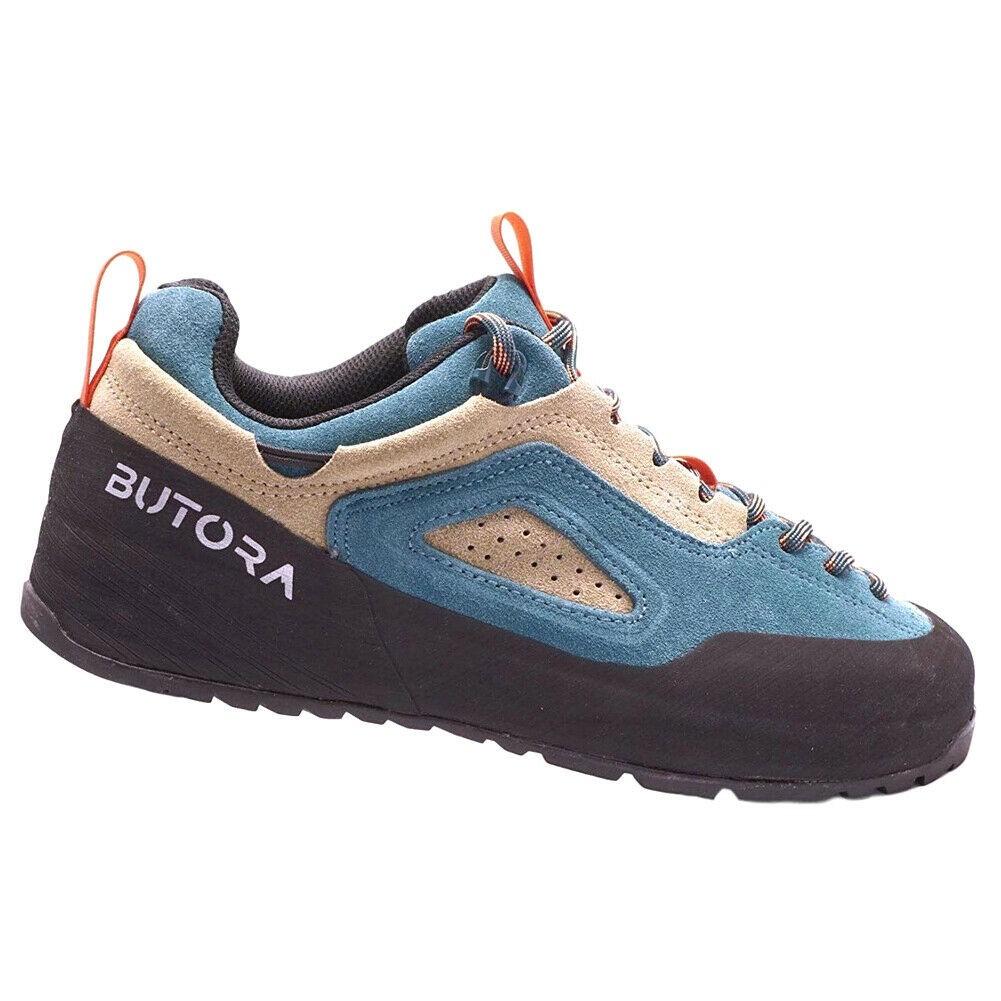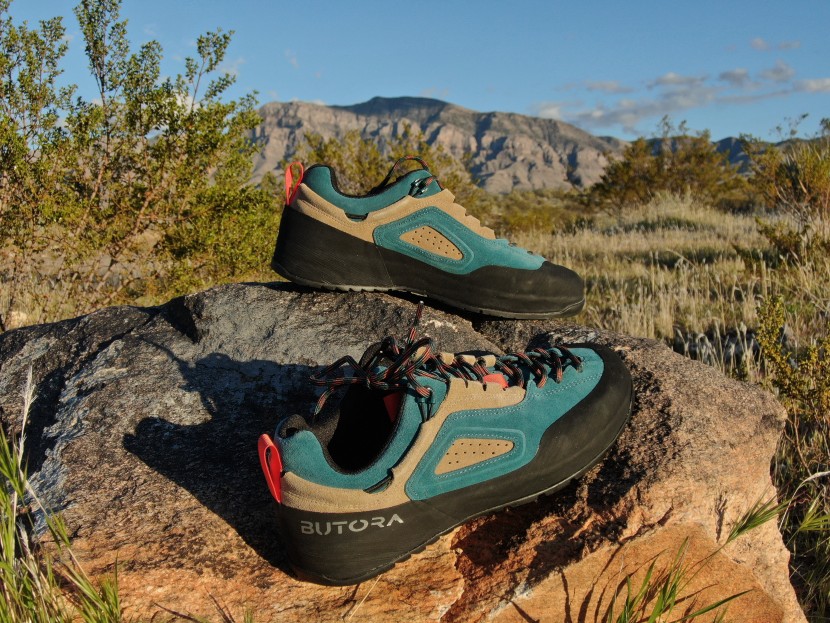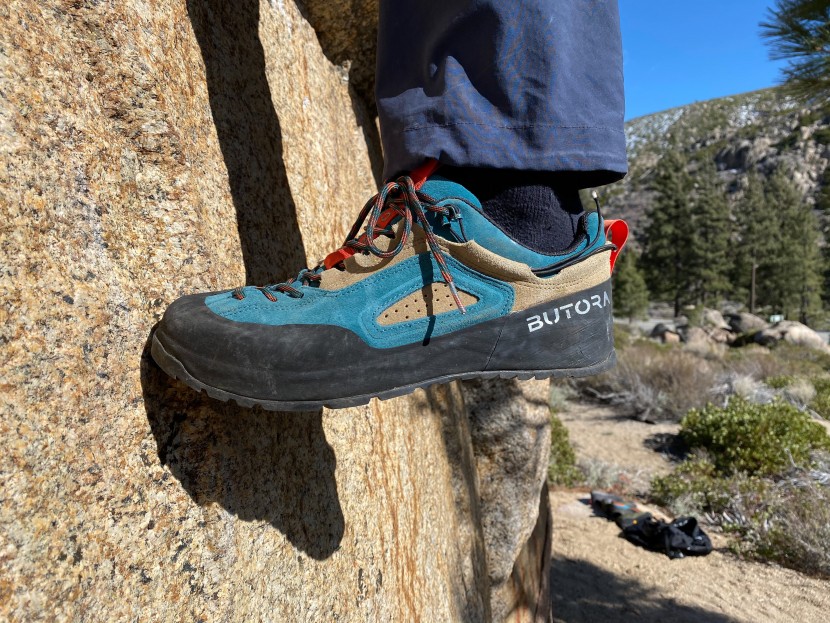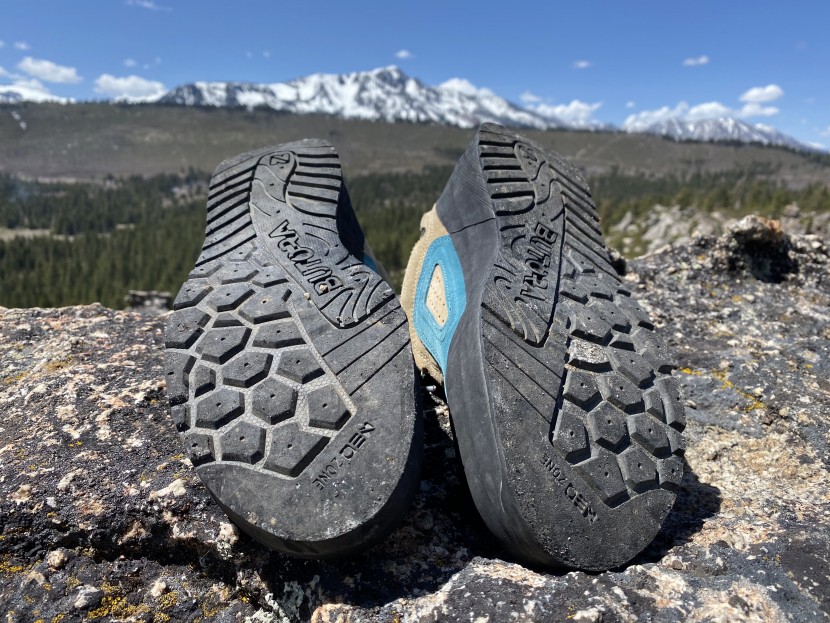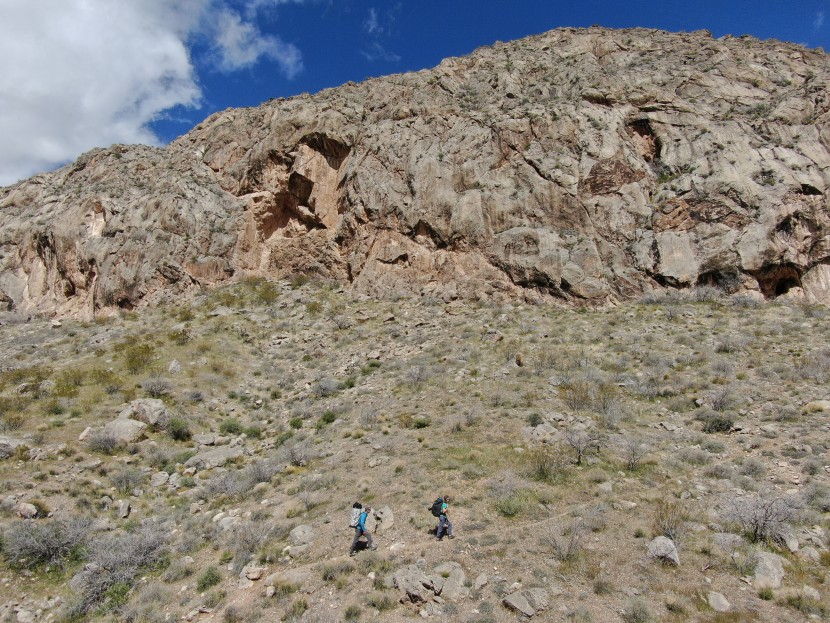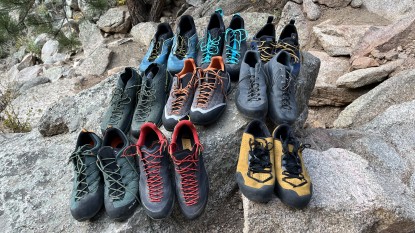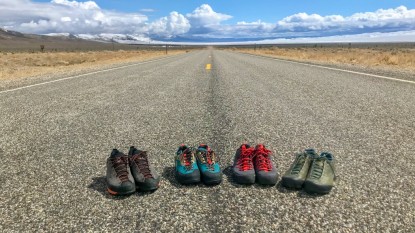Butora Wing Review

Our Verdict
Our Analysis and Test Results
Climbing Ability
To our surprise, this shoe excelled in the vertical world. We attribute most of the Wing's performance to its very stiff midsole, and less to performance design. It's a clunky shoe that feels more like a hiking boot than a climbing shoe, which normally negatively affects climbing performance.
Edging
The very stiff Wing allowed maximum power transfer through the big toe and minimized flex in the shoe. It felt a bit like standing on a wooden platform. Despite the clunky and bootlike design hindering the sensitivity and precision of the Wing, it excelled when edging due to its extreme stiffness.
Smearing
The initial appearance of the Butora's proprietary Neo Fuse rubber is of hard plastic. At first glance, the Wing would not be a climber's top choice for Yosemite's slab testpiece, Hall Of Mirrors. But the rubber was every bit as sticky as the competitors and the shoe flexed just enough to get a solid amount of rubber-to-rock contact under the ball of the foot.
Crack Climbing
As they say with crack climbing, “If it hurts, you know you're doing it right.” But if you'd like to eliminate some of the pain of crack climbing you could shove it into a crack while wearing this shoe. The thickness of the shoe and 360-degree rubber help mitigate the normal pain of shoving your feet into a crack and loading all your weight onto it. The copious use of rubber increases confidence in squeeze chimneys and off-widths where techniques like heal-toeing are mandatory. This shoe is a great option for comfortable climbing in moderate cracks that are hand-sized and bigger.
Hiking Comfort
This flat-soled shoe has a distinct lack of heel-to-toe rocker. The transition from heel strike to the forefoot while wearing this shoe was non-existent and was reminiscent of wearing a ski boot. To be confident in the assessment, we simply placed a Wing on one foot, and a separate shoe on the other to illuminate the difference. The resultant gate was awkward and unnatural, and could potentially lead to pain in the hip and knee joints. The vertical height of the toebox was limited and put uncomfortable downward pressure on our tester's big toenails.
Support
The very stiff midsole provides unmatched support for those needing to stand in aiders all day. The toe rand is feels reinforced with a stiff material, and in combination with the generous amount of rubber, it provides the best protection to toes than any shoe we tested. The burly construction provides great protection for your feet and toes during repeated abuse in cracks, jumaring, and hiking over shifty talus fields.
Weight and Packability
These shoes are too heavy and bulky to be considered for a descent shoe, weighing 34.7 oz in size 10.5 US Men's on our scale. If you made the mistake of clipping these shoes to your harness at the base of Astroman, there's a good chance you'd get stuck in the Harding Slot. We would not recommend these for avid multi-pitch climbers who walk off climbs regularly.
Value
The Wing doesn't offer a competitive advantage in price. It's similar or more expensive in price to award winners we tested, and as a newcomer to the approach shoe game, it's hard to stand behind the product with full confidence. The sole stands to last a long time given the amount of rubber on the shoe. The heel hugging lace system broke when lacing up the first time we took them for a spin, though, which doesn't help their value.
Conclusion
If the only metric were climbing performance, the Butora Wing could be the top choice. But since we predominantly wear climbing shoes on the rock, and approach shoes to get there, it's hard to ignore how uncomfortable these shoes are to hike in.


